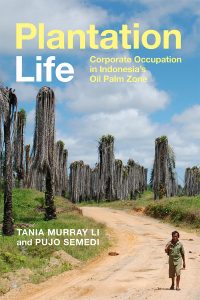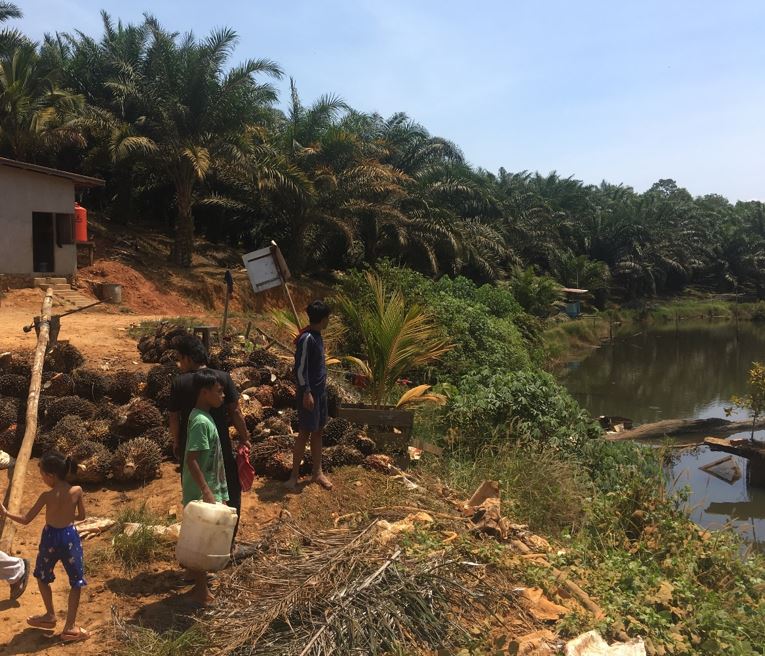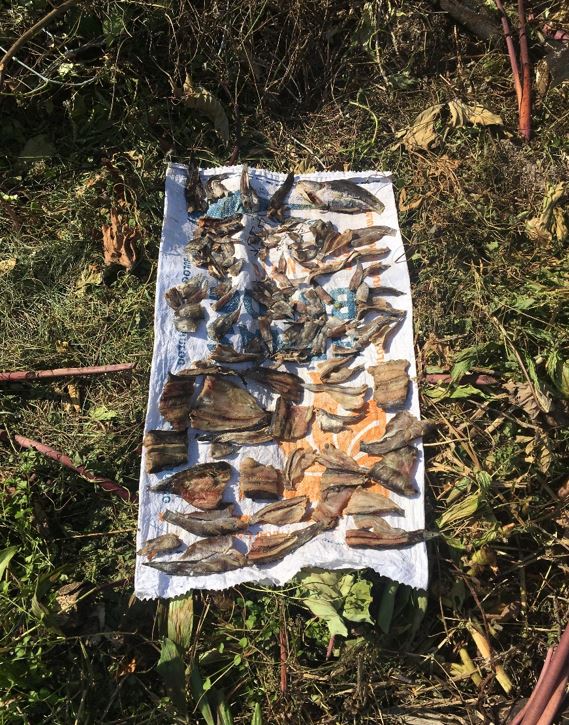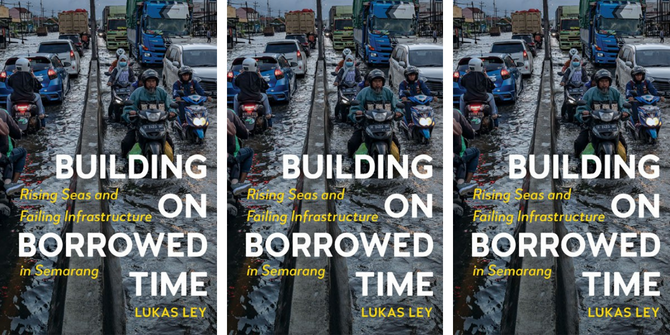In Plantation Life: Corporate Occupation in Indonesia’s Oil Palm Zone, Tania Murray Li and Pujo Semedi offer a new ethnography of oil palm plantations in Indonesia, which supply 50 percent of the world’s palm oil. The book is set to become a required point of reference for future research on plantations, writes Paul Thung.
This book review is published by the LSE Southeast Asia blog and LSE Review of Books blog as part of a collaborative series focusing on timely and important social science books from and about Southeast Asia.
Plantation Life: Corporate Occupation in Indonesia’s Oil Palm Zone. Tania Murray Li and Pujo Semedi. Duke University Press. 2021.
 Badu manoeuvres his pick-up truck over narrow dirt roads through rows of oil palms until we reach the clearing where his family grows rice. On the back sit his two children, his wife, her sister, their mother and six men – two very young, the others middle-aged. The men cut the weeds and the vines; the women look for fish and banana blossom. After lunch, we refresh ourselves in a deep, man-made pond. If the hot weather continues, the slashed plants will be dry enough for burning in a week. Badu won’t pay people to guard the fire: ‘The people of the company get paid for that; it is their responsibility, so why should I?’
Badu manoeuvres his pick-up truck over narrow dirt roads through rows of oil palms until we reach the clearing where his family grows rice. On the back sit his two children, his wife, her sister, their mother and six men – two very young, the others middle-aged. The men cut the weeds and the vines; the women look for fish and banana blossom. After lunch, we refresh ourselves in a deep, man-made pond. If the hot weather continues, the slashed plants will be dry enough for burning in a week. Badu won’t pay people to guard the fire: ‘The people of the company get paid for that; it is their responsibility, so why should I?’
As the above example from my PhD fieldwork in West Kalimantan shows, oil palm plantations transform life. Where there used to be cool forest streams, Badu’s work party now bathed in a murky reservoir. On the positive side, the existence of corporate firefighting teams (for whose use the water reservoir had probably been dug) spared Badu some money and effort in protecting neighbouring plots from his agricultural fires. I picked up Tania Murray Li and Pujo Semedi’s Plantation Life, hoping it would shed light on such transformations. Arguably the first (but not the last) full-length ethnography of oil palm plantations, the book is about how plantation corporations ‘generate novel forms of life’ (27).
The pervasiveness and scale of plantations guarantee that the book will interest a wide audience. Anyone living (or doing fieldwork) in Kalimantan, Sumatra or Malaysia inevitably encounters oil palm plantations, and anyone anywhere is likely to regularly consume the oils they produce. Like me, these readers will approach the book with their own questions. The book has already been praised for its theoretical contributions to understanding plantations, for its compelling and accessible style and for setting a model of international scholarly collaboration. Shofwan Al Banna Choiruzzad called it ‘the book I would like to have written’.
While I share in this general enthusiasm, I limit this blog post to a modest point of critique: that the book is not so much about new forms of life in or with plantations but primarily about the life of the plantation. The opening of the book sets the tone with two metaphorical answers to the question: what is a plantation? Semedi sees the plantation as a giant: ‘inefficient and lazy […] greedy and careless, destroying everything around’. Li suggests the metaphor of a machine that ‘takes life under control: space, time, flora, fauna, water, chemicals, people’ (vii). Whether clever machine or stupid giant, the plantation is the protagonist in this book. While we hear about a variety of other lives, the descriptions and analyses focus on how they are controlled and degraded by the plantation. Those are stories worth telling but what stays out of sight are the stories of people like Badu, who creatively reinterpret and repurpose the plantation landscape.

Figure 1: Badu’s working party finds refreshment in the oil palm plantation. Photo taken by and copyright of the Author.
A rundown of the book’s contents will make this clear. The book describes a plantation zone in ‘an oil-palm saturated sub-district’ (3) of Sanggau in West Kalimantan. This expansive field site encompasses a 5,000-hectare state-owned plantation (Natco), a 39,000-hectare privately-owned plantation (Priva) and a number of small Malay and Dayak settlements situated within and between these plantations. In the introduction, the authors develop a conceptual framework, which consists of three elements. First, the authors conceptualise corporate presence as a form of occupation, drawing explicit parallels with colonialism and military occupation, to capture how plantations ‘shaped possibilities for social actions in profound and disturbing ways’ (156). Second, they use Ann Stoler’s concept of ‘imperial debris’ to highlight how plantation life builds on and reinforces ‘race-like divides’ (10) in Indonesian ideology, law and social life, which are remnants of colonial rule. Third, the authors coin the concept of ‘extractive regimes’ to highlight the multiple forms of value that plantations extract from the landscape: as palm oil, as corporate profit, as state revenue and as illicit rents.
Each of the first three chapters addresses a component of palm oil production: acquiring land, managing labour and managing outgrowers. The image of plantation life that emerges is bleak, which will not surprise those familiar with previous reports. Local rights to land were discounted and ignored. Compensation for customary landowners was low. They had no means of redress because the village leaders had been co-opted and made into ‘company men’. Workers on the plantation cores were often hired on a casual basis so that ‘they could be cheated and thrown out like old rags’ (86). They stayed only because, in Indonesia’s labour-surplus economy, they had no better alternatives. The largest part of the corporations consisted of ‘outgrower plots’ (plasma). Households were given a small plot with young oil palms on credit. They were supposed to pay off their debt by selling palm fruit to the corporation, but were challenged by poorly maintained roads, non-transparent accounts and unofficial extra charges. Most had barely enough income to get by, and many were forced to sell their plots. Some outgrowers described themselves as ‘stepchildren of the corporation’: ‘made to work hard for the family but excluded from its benefits’ (92).
‘Plantation life would be a dead end for them’ (175); the authors write about the villagers on whose lands plantations are established. Indeed, the first three chapters suggest these plantations generally do less to generate than to degenerate life. The chapters detail the manifold forms of theft, trickery and predation that occur on all sides and at all levels. While many residents of the plantation zone found this so-called mafia system undesirable, it was also unavoidable.
In the absence of good corporate management, government protection, or functioning workers’ unions, everyone had to put up with informal tolls and levies. For many, engaging in theft and trickery of their own was the only way to look after themselves and preserve a sense of dignity.
Although Chapter Four sets out to describe ‘the forms of life that emerged in the plantation zone’ (122), for the most part it reinforces the impression that plantations degenerate life. The possibilities for villagers to seek recourse against mismanagement and rights violations were eroded because government officials were either enrolled on the side of the corporations or powerless to challenge them. The everyday lives of Natco employees were ‘comprehensively controlled’ (132) by the corporation, creating displays of discipline, hierarchy and prosperity in the ideal image of Indonesian modernity. In the time of the colonial rubber plantation, there had been a ‘flow of people, money, and food between the plantation and surrounding villages’, but after Natco arrived, ‘a rigid spatial and social separation became entrenched’ (143). Plantation employees ignored and looked down upon the inhabitants of the Dayak and Malay enclaves.
In order to explain why such destructive plantations like Natco and Priva are able to persist and expand, the final chapter takes a step back from the field sites and moves to wider questions of political economy. The authors maintain that plantations have not brought the development or high levels of production they promised and that independent smallholders could do both more efficiently. The continued expansion of corporate plantations is explained by their function as a ‘cash-cow’ (181) for investors, managers and politicians. Moreover, decades of critique have been limited by a focus on incremental change. The sector has responded with promises of self-improvement through initiatives like The Roundtable on Sustainable Palm Oil (RSPO) and ‘No Deforestation, No Peat, No Exploitation’ (NDPE). While these initiatives have, according to the authors, achieved no more than marginal improvements, they have succeeded in drawing attention away from the fundamental question of whether corporate plantations are legitimate in the first place.
To sum up, the book describes the hardships faced by people in the plantation zone and places these in a political-economic context. This is a brilliant example of what Sherry Ortner calls ‘dark anthropology’, which focuses on ‘the harsh dimensions of social life’ – human suffering, domination and exploitation. The authors eloquently express their feelings of anger and sadness, which may seem apt for a book on a notoriously harmful sector like palm oil. It is set to become a required point of reference for future research on plantations.
The main drawback, for me, is that the book’s focus on the political-economic logics of the plantation ultimately discards the hopes and aspirations of many of those who live in and with plantations. Interlocutors who try to remedy their situation by stealing and making specific demands from corporations are diagnosed as lacking a ‘framework for linking their sense of injustice to a broader analysis or collective struggle’ (86). The authors maintain that the flaws of corporate plantations are fundamental and cannot be fixed through incremental change. The authors would like to see ‘a complete and permanent end to plantation concessions’ and a shift to independent smallholder production but think that to call for this is ‘futile because at the time of writing the counterforces necessary for such a reversal are not in place’ (183). This analysis of plantation politics may be a useful rallying cry for activist organisations to put such counterforces in place, but it leaves plantation workers and local communities without a more immediately viable response.

Figure 2: Fish caught in the oil palm plantation dries in the sun on the cleared swidden field. Photo taken by and copyright of the Author.
The authors acknowledge that their analysis and position might be particularly grim because they ‘happened to study two unusually troubled, inefficient, and corrupt plantations’ (191). They invite comparative engagement with their analysis that shows how and why some of the harms they describe do not occur in other cases. While I hope that some researchers take up that challenge, I also want to suggest a different line of analysis. In line with what Joel Robbins calls an ‘anthropology of the good’, we might ask about the culturally specific ways in which residents of the plantation zone ‘understand the good and define its proper pursuit’ (457).
The account of plantation-edge farming with which I opened provides a starting point. For the Dayak villagers I lived with, the arrival of the plantation changed how they practised swidden farming, but it did not change its fundamental importance for a good life. In other words, plantations may (as Li and Semedi argue) shape possibilities for action in disturbing ways, but local residents also creatively reinterpret plantations in line with cultural understandings of the good life. To Badu on that particular day, the plantation was not a giant or a machine but a backdrop for his farm. Similarly, I also observed how plantations were popular as a hunting ground for local youth. Although boar and deer had become hard to find, young people now targeted the squirrels, pythons and leopard cats that thrived on the plantation.
Telling stories in which the plantation is not the protagonist but part of the background raises questions about how plantation life intersects with other aspects of the social context in Kalimantan today. Following these questions will stimulate deeper engagement with regional academic discourse, such as on ideals of conviviality, customary leadership and Christianity. Ultimately, this may lead not only to deeper understandings of how plantations transform local lives but also make space for people like Badu to transform our ideas of what plantations are.
Acknowledgements: I would like to thank Dr Viola Schreer and Dian Ekowati for stimulating conversations and useful feedback on this book review.
Note: This review gives the views of the author, and not the position of the LSE Review of Books blog, the LSE Southeast Asia blog or of the London School of Economics and Political Science.
Banner image credit: Banner photo taken by and copyright of the Author.







1 Comments